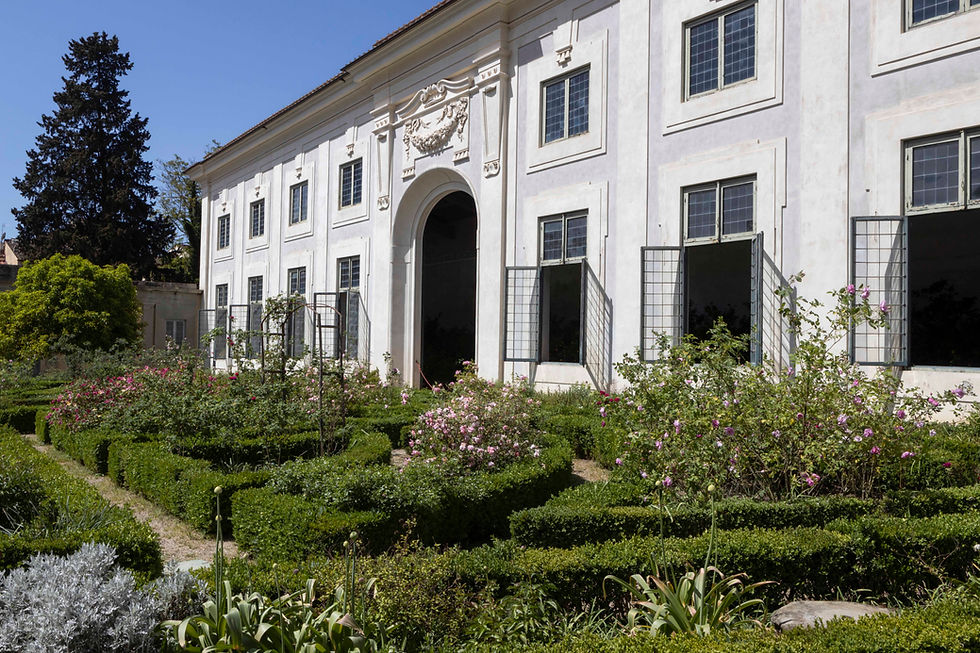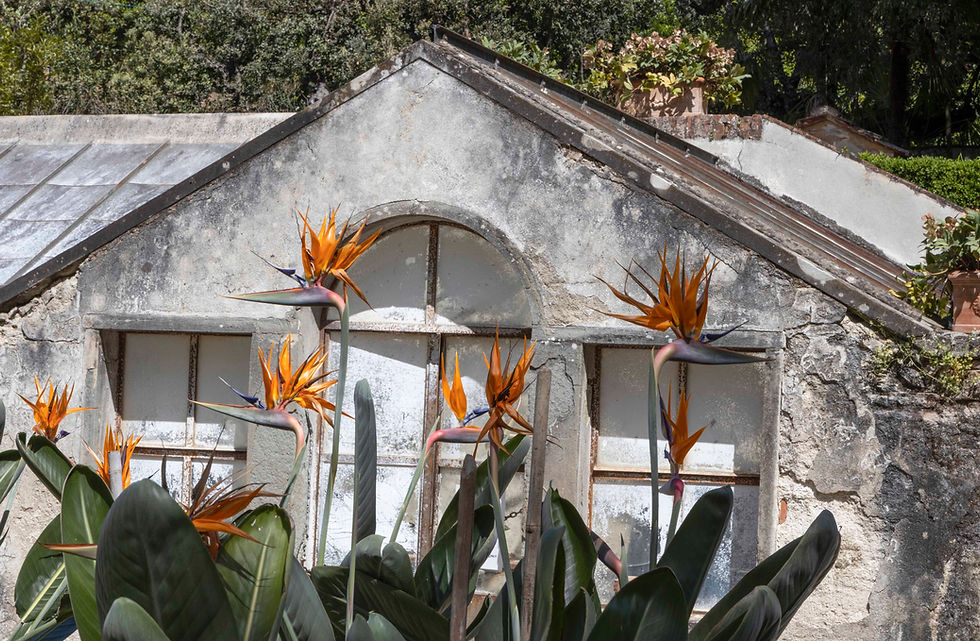From Renaissance Splendour to Modern Magnificence; Boboli Gardens in Pictures
- Vicki Gardner
- Apr 29, 2024
- 5 min read
The Boboli Gardens are inextricably linked to the Pitti palace, which was originally built by Luca Pitti, a wealthy banker and merchant in 1440. After Luca died in 1473, the building was abandoned and was bought again in 1550 by Eleonora de Toldeo, wife of Cosimo I de’Medici, who also bought the surrounding land. The gardens were originally worked on for Eleanor by Niccolo Pericolo, known as Tribolo, but when he died prematurely in 1558, Bartolomeon Ammannati took over and after him, by Bernardo Buontalenti. Called the Boboli Gardens because the area on the hillside on which the gardens were developed was known as Boboli (possibly the name of the original owners), they were designed to have symmetrical and geometrically arranged paths, flowerbeds, and trees, with rare flowers, trees and fountains. An innovative design for the time, which would subsequently inspire many European courts in their own garden designs.

Various elements of the gardens developed over time, the early parts being the Grotto of the Madama followed by the Buontalenti Grotto, a complex of three chambers with frescoes, mosaics, sculptures, and water features and constructed between 1553 (Grotto of the Madama) and 1593 (Buontalenti Grotto) and the amphitheatre, inaugurated in 1637 to celebrate the marriage of Ferdinando II and Vittoria della Rovere.

During the seventeenth century, a lot of extra work was undertaken in the gardens. The amphitheatre with masonry tiers was built by Giulio Parigi and his son Alfonso, from 1631, and replaced the more natural green amphitheatre that was there originally. The original statues in the many niches on the amphitheatre tiers were of Roman myth characters and animals. Today statues alternate with terracotta urns with a faux-marble finish. Parigi installed an Egyptian obelisk from Luxor which was later replaced with one from the Medici family’s Roman collection along with the huge basin from the Baths of Caracalla in Rome. Grand Duke Cosimo II commissioned the Viottolone, the grand, central avenue running down the hill and terminating in the Isolotto, with its island pond, dominated over by the great statue of Oceano by Giambologna. At the same time, the statue of Neptune, by Stoldo Lorenzi for the hill above the amphitheatre was commissioned. These two statues were no doubt designed to represent two components necessary for Cosimo to govern; warrior and determination, represented by Neptune and domination with justice and magnanimity by the Oceano statue. The Oceano statue was originally in the amphitheatre in 1576 and moved to the Isolotto later. Today the original statue is in a museum and a replica placed in the gardens. Oceano is surrounded by a huge oval island, filled with symmetrical and geometric flowerbeds, and adorned with statues and fountains depicting fantastical and mythological figures such as Perseus, Pegasus, Andromeda and Harpies. The whole island was designed to be a water theatre, with the pebble star at the end of the Viottolone being a water fountain, and further jets of water from the railings, fountains, and statues. Huge monumental gates, with columns topped by Capricorn statues, symbol of the power of the Duchy of Tuscany, close off the two bridges that connect the island to the rest of the gardens. Beside the gates are the Harpies fountains and the statues of Perseus and Andromeda emerge from the lake. In the summer months, around 500 citrus trees in pots are moved onto the Isolotto to decorate the bridges and island.




The Viottolone is flanked by cypress trees and numerous statues, with parallel, arched, gallery paths formed out of carefully pruned oaks, providing much needed shade on a hot day, that run beside the Viottolone. Originally, either side of the Viotollone had green mazes that have been replaced by more modern garden designs. At the top of the garden, high above the Pitti Palace, we find the statue of ‘Abundance’, with wheat sheaf clutched in hand, created by Giambologna and Pietro Tacca in 1636 and close to the Knights Garden and Building. In 1700, Cosimo III commissioned the Knights Building, Casino de Cavaliere, for his son to have lessons in and which now houses a porcelain museum (currently closed). The garden, Giardino del Cavaliere, is thought to be named after the defence bastion nearby, called, ‘of the Malatesta knight’. The gardens feature geometric beds, bordered by clipped boxwood hedges and filled with peonies, Banksiae and Bourbon roses.





During the late eighteenth century, Grand Duke Peter Leopold of Lorraine commissioned the Kaffehaus, near the amphitheatre, designed as a stopping place for the Lorraine’s as they wandered the gardens, and the Lemon House, both designed by architect Zanobi del Rosso, in 1775 and 1777. The Lemon House was built on the site of the old Medici menagerie and was used to shelter the 500+ citrus trees in earthenware pots that the Medici family collected in the sixteenth century. The Lemon House is still used today for the same purpose.



The gardens passed to the Habsburgs in the nineteenth century who opened the gardens to the public and when they first became a tourist attraction. Restoration and renovations were undertaken during the twentieth century to preserve the character and beauty of the gardens, leading to the lush, mature gardens we see today, that are still packed full of sculptures, including modern ones such as the immense bronze face, ‘Tindaro Screpolato’ by Igor Mitoraj. Even the drinking fountains are mini sculptural pieces with faces peering up at you.




Every aspect of the Boboli Gardens is grand. Huge vistas; the enormous amphitheatre, the cypress lined Viottolone, the Isolotto and Meadow of the Columns with its imposing semicircle of plane trees, all inviting exploration with shady, tree arched walkways linking main thoroughfares, dotted with smaller gardens such as the Knights and Botany Gardens.







Don’t expect to explore the Boboli Gardens quickly, to really make the most of them you’ll need a good 3- 4 hours and there is no café or refreshments available inside the gardens so make sure you bring some snacks and drink, although it is worth finding a drinking water fountain to enjoy their mini sculptures. Skip the line tickets cost from €15.50 and you can enter the gardens from four entrances: Pitti Palace, Via Romana, Porta Romana and the Belvedere Fort. It’s worth researching the best entrance to use because obviously some, like the Pitti Palace entrance, can have long queues, even with skip the queue tickets. During busy weekends and holidays, tickets can sell out so it’s worth booking your ticket in advance. Tickets to the Boboli Gardens also include entrance to the Bardini gardens and the Belvedere Fort entrance is closest to these if you want to combine your visits. The gardens open at 8.15am and closing times vary depending on the time of year. No trip to Florence is complete unless you’ve explored these unique and beautiful gardens, whose history and design date back for centuries.
© 2024 Vicki Gardner
Words and images available through GAP photo library or from Vicki directly.























Comments